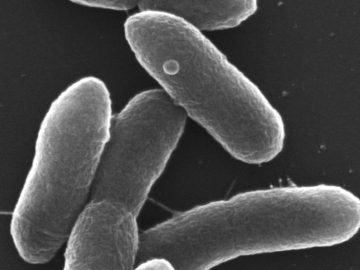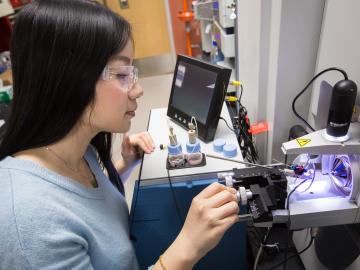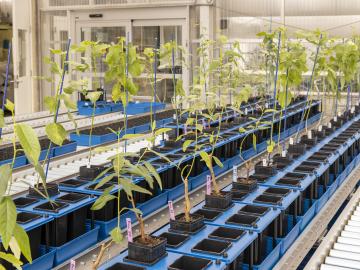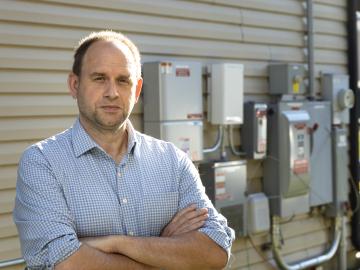
Filter News
Area of Research
- (-) Energy Science (84)
- (-) Neutron Science (17)
- (-) Quantum information Science (3)
- Advanced Manufacturing (2)
- Biological Systems (1)
- Biology and Environment (55)
- Computer Science (2)
- Fusion and Fission (6)
- Isotope Development and Production (1)
- Isotopes (24)
- Materials (62)
- Materials for Computing (10)
- National Security (24)
- Nuclear Science and Technology (9)
- Supercomputing (65)
News Type
News Topics
- (-) Big Data (3)
- (-) Bioenergy (28)
- (-) Composites (8)
- (-) Cybersecurity (10)
- (-) Energy Storage (47)
- (-) Frontier (2)
- (-) Isotopes (1)
- (-) Microscopy (8)
- (-) Space Exploration (3)
- 3-D Printing/Advanced Manufacturing (55)
- Advanced Reactors (5)
- Artificial Intelligence (11)
- Biology (16)
- Biomedical (17)
- Biotechnology (4)
- Buildings (19)
- Chemical Sciences (15)
- Clean Water (6)
- Computer Science (28)
- Coronavirus (19)
- Critical Materials (4)
- Environment (35)
- Exascale Computing (2)
- Fossil Energy (3)
- Fusion (2)
- Grid (22)
- High-Performance Computing (6)
- Hydropower (1)
- Machine Learning (7)
- Materials (30)
- Materials Science (34)
- Mathematics (2)
- Mercury (2)
- Microelectronics (1)
- Molten Salt (1)
- Nanotechnology (15)
- National Security (7)
- Neutron Science (95)
- Nuclear Energy (7)
- Partnerships (12)
- Physics (9)
- Polymers (7)
- Quantum Computing (1)
- Quantum Science (10)
- Security (8)
- Simulation (2)
- Summit (9)
- Transportation (35)
Media Contacts

The combination of bioenergy with carbon capture and storage could cost-effectively sequester hundreds of millions of metric tons per year of carbon dioxide in the United States, making it a competitive solution for carbon management, according to a new analysis by ORNL scientists.

Prometheus Fuels has licensed an ethanol-to-jet-fuel conversion process developed by researchers at Oak Ridge National Laboratory. The ORNL technology will enable cost-competitive production of jet fuel and co-production of butadiene for use in renewable polymer synthesis.

Scientists at ORNL and the University of Nebraska have developed an easier way to generate electrons for nanoscale imaging and sensing, providing a useful new tool for material science, bioimaging and fundamental quantum research.

ORNL scientists have modified a single microbe to simultaneously digest five of the most abundant components of lignocellulosic biomass, a big step forward in the development of a cost-effective biochemical conversion process to turn plants into

Scientists at Oak Ridge National Laboratory and Ohio State University discovered a new microbial pathway that produces ethylene, providing a potential avenue for biomanufacturing a common component of plastics, adhesives, coolants and other

Oak Ridge National Laboratory researchers have developed artificial intelligence software for powder bed 3D printers that assesses the quality of parts in real time, without the need for expensive characterization equipment.

Scientists at the Department of Energy’s Oak Ridge National Laboratory have a powerful new tool in the quest to produce better plants for biofuels, bioproducts and agriculture.

Joe Hagerman, ORNL research lead for buildings integration and controls, understands the impact building technology innovations can have during times of crisis. Over a decade ago, he found himself in the middle of one of the most devastating natural disasters of the century, Hurricane Katrina.

Five researchers at the Department of Energy’s Oak Ridge National Laboratory have been named ORNL Corporate Fellows in recognition of significant career accomplishments and continued leadership in their scientific fields.

Scientists at ORNL used neutron scattering and supercomputing to better understand how an organic solvent and water work together to break down plant biomass, creating a pathway to significantly improve the production of renewable


